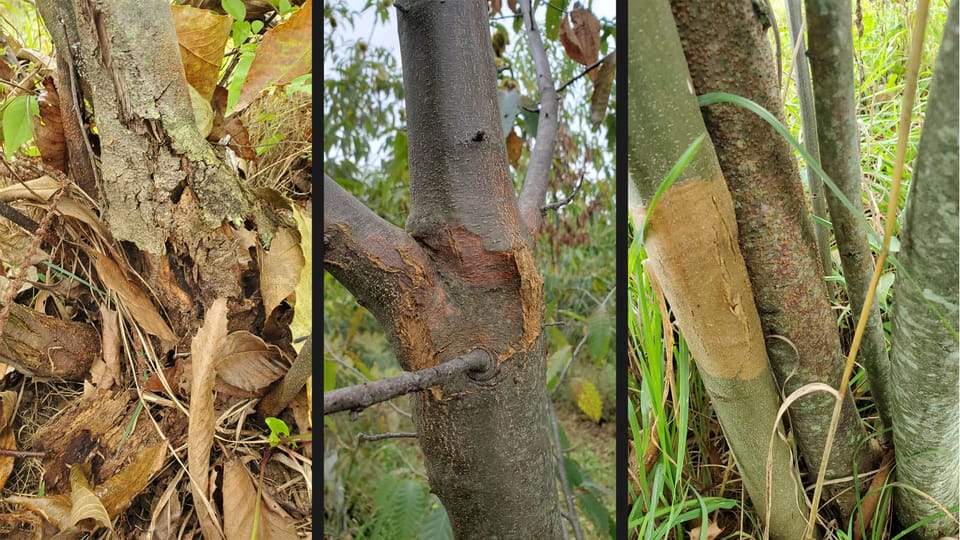Restoring The Eastern Forest Giant: Hopeful Advances in American Chestnut Restoration

Once a dominant presence in eastern North American forests, the American chestnut (Castanea dentata) was a majestic tree, towering over 100 feet and serving as an ecological cornerstone. However, in the early 20th century, chestnut blight—a devastating fungus (Cryphonectria parasitica)—wiped out billions of these giants, leaving only scattered remnants. Today, a new chapter is unfolding through groundbreaking scientific advancements, bringing tangible hope for the revival of this iconic tree.
Understanding Chestnut Blight
The chestnut blight fungus infects trees through wounds in the bark, creating lethal cankers that kill the aboveground tree. Without any natural resistance, the American chestnut rapidly succumbed, drastically altering forest ecosystems. Yet, innovative strategies are emerging to combat this blight effectively.
Genetic Engineering: Precision Resistance
Cutting-edge genomic tools, including CRISPR-based editing, are now being harnessed to directly enhance chestnut blight resistance. A landmark study by Westbrook et al. (2025) integrated genomic and transcriptomic approaches, identifying alleles associated with blight resistance. These findings facilitate targeted genetic modifications, notably introducing wheat-derived oxalate oxidase (OxO), which neutralizes the fungus’s primary attack method.
Harnessing Hypovirulence
Hypovirulence, leveraging viruses that infect and weaken the fungus itself, represents another promising avenue. The Cryphonectria Hypovirus 1 (CHV1) has been successfully used in European chestnut restoration efforts, as detailed by Suzuki et al. (2021). Research continues to evolve in engineering hypoviruses for more effective and stable use within North American fungal populations.
Advanced Breeding and Genomic Prediction
Traditional breeding strategies have significantly advanced through genomics. Fernandes et al. (2022) demonstrated the effectiveness of genomic prediction techniques to rapidly identify resistant hybrid genotypes. By cross-breeding American chestnuts with naturally resistant Chinese varieties, researchers aim to produce hybrids retaining the desired traits of the native species while significantly increasing blight resistance.
Ecological and Community Approaches
Restoration isn't solely laboratory-driven; it encompasses broad ecological and community-driven initiatives. Rigling and Prospero (2018) emphasized integrated pest management, ecological resilience, and community involvement as essential elements in successful restoration strategies. Engaged local communities actively participate in reforestation efforts, planting genetically enhanced or resistant trees that could thrive in their native habitats.
A Blueprint for Future Restoration
This holistic, science-based approach provides a framework not only for the American chestnut but potentially for other threatened species. As described by LeBoldus et al. (2024), applying advanced biotechnological tools at an ecosystem scale can mitigate similar threats to other forest species, setting a precedent for future ecological restoration projects.
Hope for Tomorrow's Forests
The resurgence of the American chestnut is no longer merely a dream but an achievable reality. By combining genomic technology, hypovirulence strategies, and community-driven ecological restoration, scientists and conservationists are paving the way for a vibrant, diverse forest future. Through continued collaboration and innovation, the iconic American chestnut may once again rise to its towering potential, reshaping our forests and ecosystems.
References
- Fernandes, et al. (2022). Frontiers in Plant Science. DOI: 10.3389/fpls.2022.951844
- Westbrook, et al. (2025). bioRxiv. DOI: 10.1101/2025.01.01.999999
- Suzuki, et al. (2021). Journal of Virology. DOI: 10.1128/JVI.01899-20
- Rigling & Prospero (2018). Molecular Plant Pathology. DOI: 10.1111/mpp.12542
- LeBoldus, et al. (2024). Annual Review of Phytopathology. DOI: 10.1146/annurev-phyto-042720-120154
